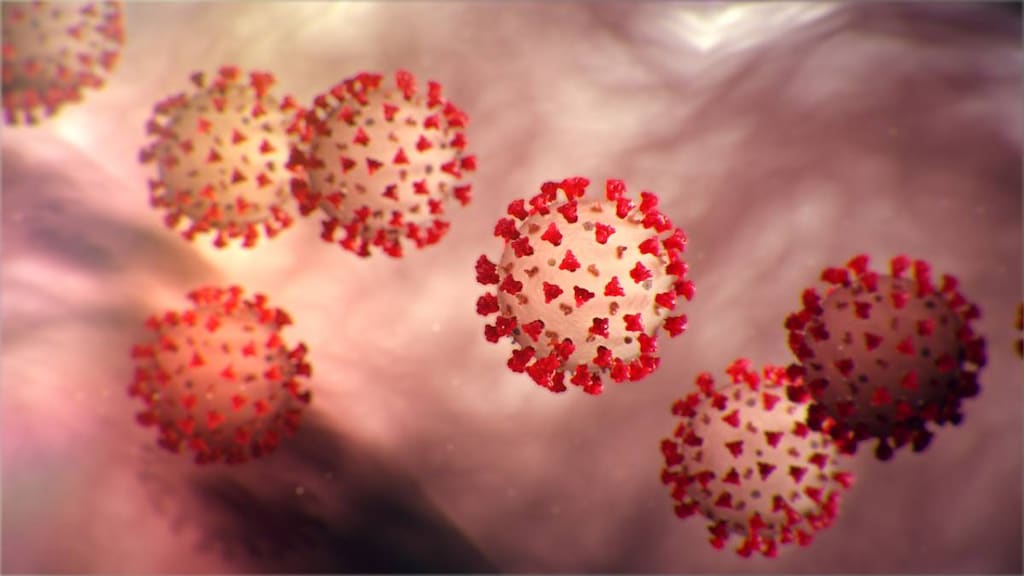Neuropilin-1 (NRP1) - a new target identified for the SARS-CoV-2 coronavirus

-
Neuropilin-1 (NRP1) helps SARS-CoV-2 invade and infect cells
-
SARS-CoV-2 was found to infect NRP1-expressing cells lining the nasal cavity in five out of six patients who died from COVID-19
-
NRP1 helped transport virus-sized particles into the central nervous system of mice infected with SARS-CoV-2
-
Monoclonal antibodies targeting NRP1 blocked SARS-CoV-2 infection in laboratory tests
A second target for SARS-CoV-2, called neuropilin-1 (NRP1), has been identified by researchers from the UK and Europe. SARS-CoV-2 contains a spike protein that allows it to bind and invade human cells and NRP1 has been identified as a new binding site for the virus. NRP1 provides a potential new target for vaccines and drugs against the new coronavirus, which causes COVID-19.
Earlier in the year, SARS-CoV-2 was found to target angiotensin-converting enzyme 2 (ACE2), a protein found on the surface airways cells as well as on cells in other areas of the body including blood vessels, the heart and kidneys. ACE2 is the same receptor protein targeted by the SARS virus, which caused an epidemic in 2003.
The researchers that identified NRP1 were investigating how SARS-CoV-2 enters and spreads around the body, which is an important step in the process of working out ways to stop this from happening.
What is neuropilin-1?
NRP1 is a cell surface receptor protein that is involved in the development of the cardiovascular and nervous systems. NRP1 is found on cells that make up the immune system, including dendritic cells, macrophages, basophils and mast cells. It is also found in abundance on cells lining the respiratory system, including the olfactory epithelium that lines the nasal cavity.
NRP1 is a potential target for cancer treatments because it is involved in the development of new blood vessels, a process which is called angiogenesis.
What is the link between neuropilin-1 and SARS-CoV-2? What the researchers found
The researchers from Europe found during their laboratory studies that NRP1 helps the new coronavirus to invade cells. In studies conducted in mice, NRP1 was also found to help virus-sized particles move from the nasal cavity into the CNS, or central nervous system of the animals. In addition, in five out of six patients who had died from COVID-19, NRP1-expressing cells in the olfactory epithelium and bulb were also found to be infected with the SARS-CoV-2. Endothelial cells of small and medium-sized blood vessels were found to be particularly affected.
UK-based researchers also observed that NRP1 facilitated the ability of SARS-CoV-2 to infect cells during cell culture experiments. Their findings also showed that it was the S1 polypeptide that binds to NRP1. The S1 polypeptide is one to two polypeptides formed when the spike protein of SARS-CoV-2 is cleaved and activated. It contains a sequence that conforms to the C-end rule (CendR). Previously researchers had shown the CendR peptides mediate NRP1-dependent cell, vascular and tissue penetration.
Both groups of researchers also found the monoclonal antibodies targeting NRP1 could be used to block SARS-CoV-2 in their laboratory tests, which could prevent or reduce the infectivity of the virus.
SARS-CoV-2 targets the nose
In a separate preprint article published in May 2020, US researchers speculated that the nasal cavity was likely the initial entry point for SARS-CoV-2 into the body. While these researchers were focused on the expression of ACE2 in the airways, the findings from the researchers in Europe also shows that NRP1 plays a role in helping the new coronavirus to infect people via the nasal cavity.
There is still much to learn about NRP1 and how it functions, but this new target is yet another piece in the puzzle that may help advance our efforts against COVID-19.
Article references
- Cantuti-Castelvetri L, Ojha R, Pedro LD et al. Neuropilin-1 facilitates SARS-CoV-2 cell entry and provides a possible pathway into the central nervous system. bioRxiv preprint doi: https://doi.org/10.1101/2020.06.07.137802. [Accessed June 12, 2020].
- Daly JL, Simonetti B, Anton-Plagaro C, et al. Neuropilin-1 is a host factor for SARS-CoV-2 infection. bioRxiv preprint doi: https://doi.org/10.1101/2020.06.05.134114. [Accessed June 12, 2020].
- Battin C, De Sousa Linhares A, Paster W, et al. Neuropilin-1 Acts as a Receptor for Complement Split Products. Front. Immunol., 13 September 2019. https://doi.org/10.3389/fimmu.2019.02209.
- Lampropoulou A, Ruhrberg C. Neuropilin Regulation of Angiogenesis. Biochem Soc Trans. 2014 Dec;42(6):1623-8. doi: 10.1042/BST20140244.
- Chaudhary B, Khaled YS, Ammori BJ, Elkord E. Neuropilin 1: Function and Therapeutic Potential in Cancer. Cancer Immunol Immunother. 2014 Feb;63(2):81-99. doi: 10.1007/s00262-013-1500-0.
- Teesalu T, Sugahara KN, Kotamraju VR, Ruoslahti E. C-end rule peptides mediate neuropilin-1-dependent cell, vascular, and tissue penetration. Proc Natl Acad Sci U S A. 2009 Sep 22; 106(38): 16157–16162. doi: 10.1073/pnas.0908201106.
- Hou YJ, Okuda K, Edwards CE, at al. SARS-CoV-2 Reverse Genetics Reveals a Variable Infection Gradient in the Respiratory Tract. Cell (2020), https://doi.org/10.1016/j.cell.2020.05.042. [Preprint Accessed June 12, 2020].




